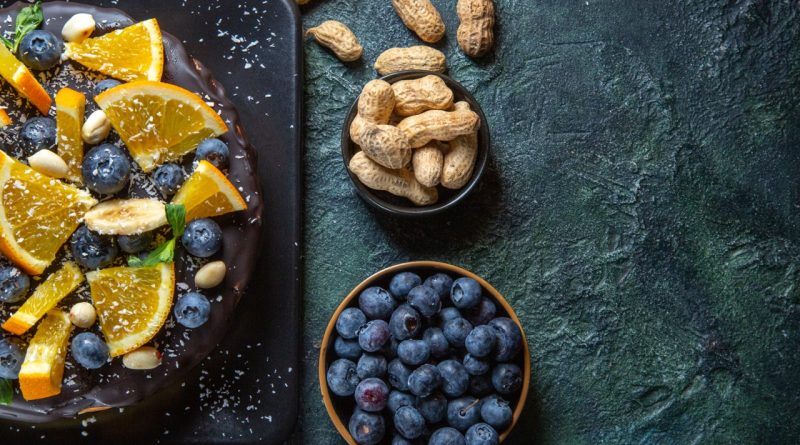How to Cook the Perfect Soft-Boiled Egg
Soft-boiled eggs are a breakfast staple and a versatile ingredient that can elevate a variety of dishes. The creamy, runny yolk paired with a tender white makes them a favorite among culinary enthusiasts and home cooks alike. However, achieving the perfect soft-boiled egg requires a precise combination of timing, temperature, and technique. This article delves into the science behind soft-boiled eggs, the essential tools and ingredients you’ll need, a step-by-step guide to cooking them, and tips for serving them to maximize your enjoyment.
Understanding the Science Behind Soft-Boiled Eggs
Soft-boiled eggs are characterized by their unique texture, which results from the delicate process of cooking. The egg consists of two main components: the egg white (albumen) and the yolk. The albumen begins to coagulate at around 140°F (60°C), while the yolk reaches its perfect consistency at about 150°F (65°C). This means that the cooking time and temperature must be carefully controlled to achieve a tender white and a runny yolk.
The Maillard reaction, which occurs during cooking, contributes to the color and flavor of the egg. However, for soft-boiled eggs, you want to avoid this reaction by using lower temperatures, ensuring the egg white remains tender and the yolk does not fully solidify. The ideal balance of heat and cooking time is crucial to prevent the whites from becoming rubbery while ensuring the yolk retains its luscious, creamy texture.
Understanding these scientific principles is essential for mastering the art of soft-boiled eggs. With this knowledge, you’ll be equipped to experiment with different cooking methods and times to find your personal sweet spot. Ultimately, precision and attention to detail are key components in elevating your soft-boiled egg game.
Essential Tools and Ingredients for Perfect Results
To cook the perfect soft-boiled egg, you’ll need a few essential tools: a saucepan, a slotted spoon, a timer, and a bowl filled with ice water. The saucepan should be large enough to hold your eggs comfortably without crowding them. A slotted spoon will help you gently place the eggs into boiling water and retrieve them once they are done cooking. A timer is crucial, as even a few seconds can make the difference between a perfectly soft yolk and one that is too firm.
The quality of your eggs also plays a significant role in achieving the ideal result. Fresh, high-quality eggs produce better flavor and texture. Look for eggs that are labeled as free-range or organic, as these often have richer yolks. The size of the egg can also impact cooking time; large eggs are generally the standard for recipes, but adjustments may be necessary for smaller or larger varieties.
Finally, having a bowl of ice water ready is important to stop the cooking process once the eggs have reached your desired doneness. This will help maintain the soft consistency of the yolk and prevent overcooking. With the right tools and fresh, high-quality ingredients, you’ll be well on your way to perfect soft-boiled eggs.
Step-by-Step Guide to Cooking Soft-Boiled Eggs
Begin by filling a saucepan with enough water to cover the eggs by at least an inch. Bring the water to a rolling boil over medium-high heat. Once boiling, reduce the heat to a gentle simmer and use a slotted spoon to carefully lower the eggs into the water. This method prevents cracking and minimizes the risk of hot splashes. Start your timer immediately upon adding the eggs.
For large eggs, aim for a cooking time of 6 to 7 minutes for the perfect soft-boiled egg. If you prefer a slightly firmer yolk, extend the cooking time to 8 minutes. During the cooking process, keep an eye on the water temperature—if it begins to boil too vigorously, reduce the heat to maintain a gentle simmer. This helps to ensure even cooking and prevents the whites from becoming tough.
Once the timer goes off, immediately transfer the eggs to the prepared bowl of ice water. Allow them to cool for about 5 minutes, which will halt the cooking process and make them easier to peel. After cooling, gently tap the eggs on a hard surface to crack the shell, then peel them under running water for easier removal. Your perfectly soft-boiled eggs are now ready to be served!
Tips for Serving and Enjoying Your Soft-Boiled Eggs
Soft-boiled eggs can be enjoyed in a variety of ways, but the classic method is to serve them in an egg cup. To do this, carefully slice off the top of the shell with a knife or use an egg topper for a clean cut. The runny yolk can be scooped out with a spoon, allowing you to savor the rich flavor and creamy texture. Pair your soft-boiled eggs with toasted bread soldiers for dipping—a delightful combination that enhances the experience.
In addition to the classic presentation, soft-boiled eggs can be added to salads, ramen, or grain bowls. Their rich yolk makes a perfect dressing when cut open, providing a delicious and luxurious addition to various dishes. Experimenting with flavors by adding herbs, spices, or even a sprinkle of flaky sea salt can elevate your soft-boiled egg game to new heights.
Lastly, don’t hesitate to explore different seasoning options. A dash of soy sauce, a sprinkle of paprika, or a drizzle of truffle oil can introduce exciting flavors that complement the egg’s natural richness. With these serving tips and creative ideas, you can fully enjoy and appreciate the delightful experience of a perfect soft-boiled egg.
Cooking the perfect soft-boiled egg requires a blend of science, technique, and creativity. By understanding the principles behind the cooking process, equipping yourself with the right tools, and following a step-by-step guide, you can consistently achieve the desired texture and flavor. Moreover, by exploring different serving methods and flavor pairings, you can elevate this simple dish into a culinary delight. Whether enjoyed solo or as part of a larger meal, soft-boiled eggs are sure to impress with their charm and versatility.
